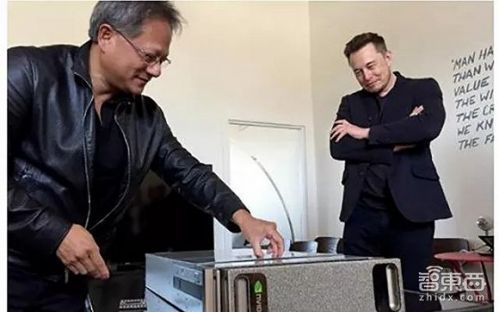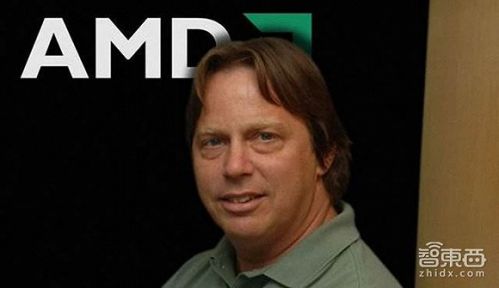A few days ago, Tesla and AMD cooperated in the development of autonomous driving chips, and the rumors of the autopilot chip once made the outside world speculate that Tesla's cooperation with NVIDIA has changed. Yesterday, Nvidia CEO Huang Renxun said at GTC China that even if Tesla used other computing chips, he could buy the Tesla car. Let's take a look at the related content with the car electronics editor. The computing chip, the brain of self-driving, has once again been pushed to the forefront. Although Groffont, who accidentally released the "fake news", denied it, the great concern of the workshop also showed that the chip is a heart disease of the autopilot company. Platform-based computing giants such as NVIDIA, Intel, Qualcomm, semiconductor vendors that have been supplying automakers since ancient times, and start-up companies that do single-point technology are constantly trying to make their own autopilot chips for autonomous driving. Master the absolute commanding heights in the competition. 1. Is Tesla’s “searching for new love†a fake? Last week, the foundry of GlobalFoundries (GF), which was split from AMD, unintentionally revealed that Tesla, AMD, and GF are "making things" in automatic driving. As soon as the news came out, the autopilot circle exploded. AMD's share price rose and NVIDIA's share price fell slightly. For the cooperation, it is reported that Tesla will develop its own autopilot chip based on AMD's chip IP, and Grofund is a foundry. However, the next day, GF jumped out and denied that there was no direct cooperation with Tesla. However, this statement is very interesting, just to clarify the "direct relationship" between himself and Tesla. Tesla and AMD both declined to comment on this news, neither denying nor admitting. Tesla certainly won't admit it because: 1. Now Tesla's model is also loaded with NVIDIA's Drive PX 2 self-driving car computer. 2. The Tesla Model S and Model X are still parked in the garage of NVIDIA CEO Huang Renxun. 3, Nvidia this year's performance of the deep learning tool DGX-1, Lao Huang directly sent a Musk-funded OpenAI, or personally handed over to the latter. But from the experience of Musk, it can be seen that he is not a person with a good balance. The breakup with Mobileye is a lesson from the past, and NVIDIA is now stunned by me, but it can't stand Tesla's goal is the sea of ​​stars. For three reasons, Tesla will be keen to develop its own autonomous driving chip: 1. Have more control over the core hardware. 2, the development of their own autonomous driving chip, can form a difference in hardware acceleration, more likely to establish the advantages of autonomous driving technology. 3, Drive PX 2 power consumption is 250W, and the price is directly 15,000 US dollars. If Tesla chooses to build a self-driving chip, it will help reduce costs after it has been scaled up. Therefore, in order to improve the core hardware control, have more computational competitiveness and cost considerations, self-developed autopilot chips are indeed an option for Tesla. The most direct evidence is Tesla as a car company (at least for now), a chip team of more than 50 people, and the team leader – Jim Keller, who joined last year. Keller worked in AMD in the early years, and participated in the creation of the X86-64 architecture (AMD's greatest contribution to the desktop processor), and came up with the K8 architecture that can compete with Intel. Later, he entered Apple and was responsible for A4 and A5 processor; another return to AMD back to AMD, dedication to the Zen architecture - Ruilong is based on the Zen architecture, forcing this year's Intel no longer squeeze toothpaste. (Jim Keller) Tesla's chip team is set by such a legendary figure in the industry. Yesterday, Nvidia CEO Huang Renxun was interviewed at GTC China and faced the question “If Tesla and other manufacturers did autopilot chips, would you still buy Tesla?†and did not rush to clarify in the answer. Cooperation with Tesla. This time, Groffonte was involved, indicating that Tesla's autopilot chip has reached at least the stage of tape test. However, Tesla is unlikely to challenge NVIDIA's GPGPU (Universal Computing GPU) in deep learning, so this chip will be a dedicated computing chip for autonomous driving. Second, the three giants battle autopilot chip The combination of Tesla and Nvidia is just the tip of the iceberg in the autopilot chip battle. In this critical area, autonomous driving chips continue the several types of hardware technology routes used in deep learning related to their deep learning: GPU, FPGA, ASIC, attracting companies from all over the world. The first thing I have to mention is Intel, NVIDIA, and Qualcomm, the three chip giants, and the competition they led has contributed most of the drama to this chip war. Moreover, they also reflect the different technical routes of autonomous driving chips. 1. Intel: I will throw $32 billion and buy a day. In the two years of deep learning, Intel was quite sad. Because CPU is good at serial and general-purpose computing, it is temporarily suppressed by the GPU when it comes to deep learning that requires massive parallel computing. As a result, Intel bypassed the GPU and completed its acquisition of Altera, the world's second-largest FPGA company, in 2016 for $16.7 billion. (Altera FPGA chip) FPGA, field programmable gate array, is a chip between the CPU, GPU and ASIC. Compared with the general computing properties of the CPU and GPU (yes, the GPU is still more "common" than the CPU, but it is still a general-purpose computing). The function of the FPGA is more specific and closer to the underlying I/O. The CPU/GPU is higher, and once programming is completed, specific operations can be performed, which is more efficient than CPU and GPU. At the same time, it is more flexible than dedicated chip ASICs - chips can be programmed repeatedly to meet changing computing needs. High real-time, low power consumption, and flexible programming, all of which cut the requirements of autonomous driving for computing chips. Intel also used FPGA chips in Intel Go, an autopilot computing platform launched at the beginning of the year. Audi's new A8 autopilot relies on the core computing unit zFAS, which also uses Altera's FPGA chip, built-in Movidius vision algorithm acquired by Intel, responsible for the fusion of object data and map data, and the realization of automatic parking function. In addition, Intel has a strong presence in the server market, which means that in the cloud, it can deploy powerful computing power. Combined with low latency and efficient FPGAs, Intel can handle large amounts of concurrent real-time computing in the cloud. This model is especially suitable for people's vision of the smart city brain: every unmanned car's data is uploaded to a hub, which processes and understands the state of each car and commands them how to drive. Of course, unmanned vehicles and urban hubs need high-bandwidth, extremely low-latency data channels to connect, which is one of the important reasons why Intel is so focused on 5G. In this regard, Intel launched the first car 5G communication platform this year. However, although this set of ideas is very advanced, standards and infrastructure construction will consume a lot of time and money, and it will still be difficult to achieve in the short term. Therefore, it is important to enter the market with assisted driving. In October 2016, Intel released the A3900 series of Atom processors for the ADAS market, providing computational support for in-vehicle information systems and ADAS functions. In order to comply with the car rules, Intel also specially designed the A3900 to withstand temperatures up to 150°. Moreover, the A3900 with 16nm process and Apollo Lake architecture is also excellent in power consumption, up to 12W. But the ADAS chip market already has a lot of traditional car semiconductor manufacturers, as well as Mobileye, a company that dominates. How can Intel say that it can cut in? One solution to not being able to rise from a tall building is to buy one directly. In March of this year, Intel took a bite and bought Israel's ADAS company Mobileye for $15.3 billion. For other companies, Mobileye may not be worth $15.3 billion, but for Intel, the money has to be spent - when the autopilot alliance was established earlier this year, only BMW bought Intel's account. On the one hand, Mobileye provides Intel with a channel to cut into the autopilot market. The former has a share of more than 70% in the global ADAS market. On the other hand, Mobileye's core product, the ADAS-specific chip EyeQ series, has enabled Intel to form a vehicle-oriented terminal. Compute chip solution - Intel's Atom/Xeoneon+Mobileye's EyeQ+Altera FPGA. This $15.3 billion is actually a ticket that Intel bought for autonomous driving. (The EyeQ3 chip in the yellow circle) After Intel invested heavily, Mobileye directly bypassed its ADAS fourth-generation dedicated chip EyeQ4, which will mass produce EyeQ5 next year. It is worth mentioning that Mobileye claims that EyeQ5's computing power can meet the L4-L5 level of autonomous driving. At present, the auto-driving vehicle terminal and the cloud have not realized real-time high-bandwidth transmission, so the computing power of the vehicle terminal is particularly important. 2, Nvidia: ecology, performance, riding a dust Nvidia is undoubtedly the biggest beneficiary of the computing giant in the era of artificial intelligence. The dominance of GPGPU (General Purpose Computing GPU) in the field of deep learning need not be said. Most of the deep learning is currently supported by NVIDIA's GPU during the training phase. On the one hand, this is due to the fact that its GPU is more computationally intensive for deep learning than the CPU. On the other hand, NVIDIA's development ease of use for its GPU general-purpose computing is so good, Reduced the difficulty for developers to get started. This is not the case. On the GTC yesterday, Lao Huang brought the updated deep learning application platform TensorRT 3, which included all kinds of deep learning frameworks. In terms of using its GPU to support the vehicle-side deep learning application (Inference), NVIDIA's approach is quite "the more the floating-point computing power is more just". Prior to the era of autonomous driving, NVIDIA entered the list of suppliers of many OEMs through the Tegra series of processors, such as Audi, which has maintained an eight-year relationship with Nvidia, and Tesla, which is popular with Lao Huang. However, in the early years, Nvidia's Tegra was mainly responsible for in-car entertainment. (The latest news, Bloomberg reported that Tesla has replaced its entertainment information system chip supplier with Intel). This year's Audi A8 with L3 autopilot, ZFS, an autopilot computing platform built by ZF, uses NVIDIA's Tegra K1 chip to handle the car's viewing image. However, the chip that zFAS is mainly responsible for implementing the autopilot function is Mobileye's EyeQ3 and Altera's Cyclone. This is obviously not enough for Nvidia to be satisfied, and even not willing to mention this, but Tegra K1's single-precision floating-point performance is only 350GFlops, and EyeQ3 integrates a complete set of ADAS functions supported by the complete algorithm, making K1's performance look Not so tempting. (zFAS's four main computing chips) Actually, in Outdoor low power LED lamps,Aluminum Alloy LED lamps,LED point light Kindwin Technology (H.K.) Limited , https://www.ktl-led.com





 [1] [2] [3]
[1] [2] [3] 
December 17, 2022